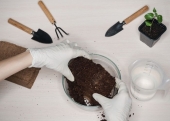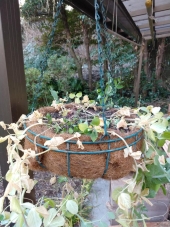
 1
1




 3
3




Sometimes the answer is nothing





"We're all just walking each other home." -Ram Dass
"Be a lamp, or a lifeboat, or a ladder."-Rumi
"It's all one song!" -Neil Young
 3
3




Pecan Media: food forestry and forest garden ebooks
Now available: The Native Persimmon (centennial edition)








 2
2




http://www.popcliq.com (web development), GoPermaculture Food Forest http://www.permies.com/t/57687/forest-garden/Permaculture-Food-Forest-suburban-permaculture, Sea Buckthorn (Seaberry) grower (hobbiest) https://www.facebook.com/michelle.bisson.37, zone 3b/4b (borderline) Quebec Canada
 1
1




No rain, no rainbow.
 1
1




Ryan Hobbs wrote:I did a garden bed like this before I knew about permaculture. I had a bag of potting soil and it wasn't nearly enough to plant in. So I made a pile of debris (leaves, pine needles, sticks, old pine cones, etc), threw some bbq ash in and dumped my potting mix on top. I planted tomatoes and basil in it. Not long after planting we had some minor flooding and the garden floated. I drove some sticks through it and into the ground to keep it from drifting away. It came back down on the same spot and I got tomatoes off of it that season. I was thinking of chinampas when I did it. We were next to a swamp and I knew about the periodic flooding.
I bought these great pots and planters for my succulents and they're amazing! https://expertplantman.com/
 2
2




Check out Redhawk's soil series: https://permies.com/wiki/redhawk-soil




Michelle Bisson wrote:I grow a lot of annual edible plants in containers and since I am using soil that I purchased in order to increase the nutrient content and soil life, I usually place plant matter at the bottom of my pails then fill it up with soil.
I started doing this because I would have more pots for planting in. If I did not do this, I would only have 12 pots to plant in, but doing this, with the same amount of soil & non composted or mostly composted organic matter at the bottom of each pot, I could now do about 17 pots.
I never make the same mistake twice.
I make it 5 or 6 times to make sure.




Visit Redhawk's soil series: https://permies.com/wiki/redhawk-soil
How permies.com works: https://permies.com/wiki/34193/permies-works-links-threads





